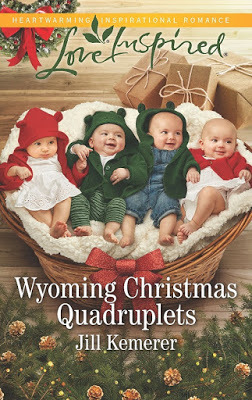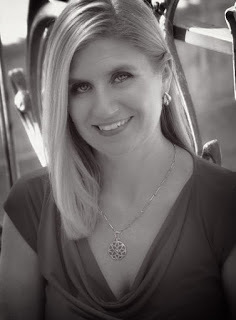Is This Idea Book Worthy?
by guest blogger @jillkemerer
 You have a great idea—it probably came to you last night as you were falling asleep or yesterday afternoon while driving home from soccer practice. The hyped-up feeling running through your veins proves the concept is awesome, and you’re itching to start writing the story.
You have a great idea—it probably came to you last night as you were falling asleep or yesterday afternoon while driving home from soccer practice. The hyped-up feeling running through your veins proves the concept is awesome, and you’re itching to start writing the story.
This is it! My best idea yet! No editor will be able to turn it down. Readers will rave. It will hit bestseller lists. I have to write it immediately.
Who cares that you’re halfway through a slower-than-molasses draft you actually dread opening every time you sit down to write? Or that you have seven or eight other stories clamoring for attention in your head? This idea must be put front and center. Now!
Whoa-ho-ho there. Hold up, Lassie. I’ve been there. Really, I have. And before you open your laptop and start pouring the story onto the page, take a big step back. It’s time to be really honest with yourself and ask yourself a key question.
Is this idea book worthy?
Duh! Of course it is. Didn’t you just hear me say bestseller lists??
I heard you. Loud and clear. I’m guessing at one time you were equally as enthusiastic about the idea for the story you’re currently working on. So why abandon it?
I’m not abandoning it. I’m setting it aside for now and will finish it after this one.
Bad move. It’s all too easy to end up with a dozen unfinished manuscripts because we’ve chased a new idea.
In order to be a successful author, you need to finish books. This means you have to write the entire manuscript, look at the plot with a critical eye, make necessary story changes, revise it, and edit it. If you get in the habit of quitting a work-in-progress (WIP) whenever a “better” idea comes along, you’re not developing the skills you need.
There’s a rhythm to a book. The more complete manuscripts you draft, the more natural it becomes to tell a compelling story. And you’ll gain skills to help you develop future ideas, because you’ll remember the spots where you floundered in the past. You’ll be on the lookout to avoid those flimsy areas in the future.
Finish the current book before you dive into the new one. Let this new idea breathe and grow legs. If it’s book worthy, it will.
At Helping Writers Become Authors, K.M. Weiland wrote an excellent article, “4 Steps for How to Turn an Idea Into a Story that Rocks.” She talks about giving the idea a safe place to incubate.
“If you want to see an idea develop, make space for it within your life. If you stuff it way back in some dusty corner of your brain, your subconscious might occasionally bat it back at you. But if you want it to grow, hold it in your mind’s eye. Don’t force it. Don’t dictate what it must or must not do. But watch it.Deep-dive into the dream zone and just let the idea roll around. See what it has to offer. Sometimes you’ll come to what seems the end of its potential, only to have a new fragment of a new idea glom onto the first one and evolve into something new. If that happens often enough, presto-chango, you’ve got yourself a butterfly.” ~K.M. WeilandWhile you’re working on your current project, allow time for the new idea’s story elements to come to you. If you’re taking a walk or in line for coffee, let your mind wander. Jot down any details that come to you.
When you have enough details, you’ll be ready to explore the following questions.
What genre do you think the idea will fit into?
If it’s a romance, do you know who the hero and heroine will be? If it’s not a romance, who is the main character?
Genre is important because readers have expectations when they purchase your book. If you’re writing a romantic suspense, you need to make sure you have plenty of danger. If you’re writing women’s fiction, you need secondary characters to challenge the heroine’s beliefs. It’s easier to brainstorm possible ways to ramp these up before your start writing.
What’s the story about?
Can you wrap it up with a one-sentence summary? Example: When an unemployed actress gets custody of her niece, she takes a job preparing taxes and must choose between the accountant she’s falling for and her dreams of Broadway.
If you can’t summarize it, that’s okay. You might not know enough about the story yet, but at some point, you’ll need to be able to clarify it.
Are the stakes high enough?
Why can’t she have both the Broadway career AND the accountant? Is raising the niece only possible in the current setting? What’s really keeping her and the accountant apart? What does he want? How can these things directly oppose her dreams? And most importantly, what do these characters have to lose?
These types of questions deepen the conflicts and produce more nuanced, page-turning books for readers.
Will readers care about this story?
This is a tough question to be objective about. We automatically assume readers will care because we’re excited, but it’s not always the case. The story must have tension for the reader to keep turning the page. Whether you’re a plotter or a pantser, continuously find ways to raise the stakes!
When a new idea seems to be growing in my mind over the course of time, I know it’s book worthy. My initial concept always changes as I answer the above questions, and it should. My imagination finds ways to expand the initial idea into a higher stakes novel that will have a better chance at grabbing a reader’s attention and holding it until the end.
How do you determine if an idea is book worthy? I’d love to hear your tips!
I’m giving away one copy (paperback for US residents, ebook for international) of Wyoming Christmas Quadruplets. Leave a comment!
Next week I’m taking over the Love Inspired Readers and Authors Facebook group. I’d love to have you join us! I’m giving away books, and we’re talking about our favorite things from Monday through Friday. Click on Love Inspired Readers and Authors (linked) and “Join Group.”
 A nanny at Christmastime…
A nanny at Christmastime…
Will she find love in this Wyoming Cowboys novel?
Six weeks on a ranch caring for quadruplets—aspiring nurse Ainsley Draper’s prepared for a busy Christmas. When the children’s handsome uncle opens the door, her task gets extra complicated. Marshall Graham is upholding his promise to look after his twin sister, the babies’ mom. But as family loyalty clashes with new love, will the perfect present include a future with Ainsley?
Purchase Wyoming Christmas Quadruplets HERE
***Mindy butting in here with news that Jill's latest release, Wyoming Christmas Quadruplets, has hit Publisher's Weekly Best Seller list! Congratulations, Jill!***
---------------------------------
 Jill Kemerer is a multi-published author of Christian romance novels. Her essentials include coffee, fluffy animals, a stack of books and taking long nature walks. Jill resides in Ohio with her husband and two almost-grown children. She loves connecting with readers, so please visit her website, jillkemerer.com, and sign up for her newsletter.
Jill Kemerer is a multi-published author of Christian romance novels. Her essentials include coffee, fluffy animals, a stack of books and taking long nature walks. Jill resides in Ohio with her husband and two almost-grown children. She loves connecting with readers, so please visit her website, jillkemerer.com, and sign up for her newsletter.
 You have a great idea—it probably came to you last night as you were falling asleep or yesterday afternoon while driving home from soccer practice. The hyped-up feeling running through your veins proves the concept is awesome, and you’re itching to start writing the story.
You have a great idea—it probably came to you last night as you were falling asleep or yesterday afternoon while driving home from soccer practice. The hyped-up feeling running through your veins proves the concept is awesome, and you’re itching to start writing the story.This is it! My best idea yet! No editor will be able to turn it down. Readers will rave. It will hit bestseller lists. I have to write it immediately.
Who cares that you’re halfway through a slower-than-molasses draft you actually dread opening every time you sit down to write? Or that you have seven or eight other stories clamoring for attention in your head? This idea must be put front and center. Now!
Whoa-ho-ho there. Hold up, Lassie. I’ve been there. Really, I have. And before you open your laptop and start pouring the story onto the page, take a big step back. It’s time to be really honest with yourself and ask yourself a key question.
Is this idea book worthy?
Duh! Of course it is. Didn’t you just hear me say bestseller lists??
I heard you. Loud and clear. I’m guessing at one time you were equally as enthusiastic about the idea for the story you’re currently working on. So why abandon it?
I’m not abandoning it. I’m setting it aside for now and will finish it after this one.
Bad move. It’s all too easy to end up with a dozen unfinished manuscripts because we’ve chased a new idea.
In order to be a successful author, you need to finish books. This means you have to write the entire manuscript, look at the plot with a critical eye, make necessary story changes, revise it, and edit it. If you get in the habit of quitting a work-in-progress (WIP) whenever a “better” idea comes along, you’re not developing the skills you need.
There’s a rhythm to a book. The more complete manuscripts you draft, the more natural it becomes to tell a compelling story. And you’ll gain skills to help you develop future ideas, because you’ll remember the spots where you floundered in the past. You’ll be on the lookout to avoid those flimsy areas in the future.
Finish the current book before you dive into the new one. Let this new idea breathe and grow legs. If it’s book worthy, it will.
At Helping Writers Become Authors, K.M. Weiland wrote an excellent article, “4 Steps for How to Turn an Idea Into a Story that Rocks.” She talks about giving the idea a safe place to incubate.
“If you want to see an idea develop, make space for it within your life. If you stuff it way back in some dusty corner of your brain, your subconscious might occasionally bat it back at you. But if you want it to grow, hold it in your mind’s eye. Don’t force it. Don’t dictate what it must or must not do. But watch it.Deep-dive into the dream zone and just let the idea roll around. See what it has to offer. Sometimes you’ll come to what seems the end of its potential, only to have a new fragment of a new idea glom onto the first one and evolve into something new. If that happens often enough, presto-chango, you’ve got yourself a butterfly.” ~K.M. WeilandWhile you’re working on your current project, allow time for the new idea’s story elements to come to you. If you’re taking a walk or in line for coffee, let your mind wander. Jot down any details that come to you.
When you have enough details, you’ll be ready to explore the following questions.
What genre do you think the idea will fit into?
If it’s a romance, do you know who the hero and heroine will be? If it’s not a romance, who is the main character?
Genre is important because readers have expectations when they purchase your book. If you’re writing a romantic suspense, you need to make sure you have plenty of danger. If you’re writing women’s fiction, you need secondary characters to challenge the heroine’s beliefs. It’s easier to brainstorm possible ways to ramp these up before your start writing.
What’s the story about?
Can you wrap it up with a one-sentence summary? Example: When an unemployed actress gets custody of her niece, she takes a job preparing taxes and must choose between the accountant she’s falling for and her dreams of Broadway.
If you can’t summarize it, that’s okay. You might not know enough about the story yet, but at some point, you’ll need to be able to clarify it.
Are the stakes high enough?
Why can’t she have both the Broadway career AND the accountant? Is raising the niece only possible in the current setting? What’s really keeping her and the accountant apart? What does he want? How can these things directly oppose her dreams? And most importantly, what do these characters have to lose?
These types of questions deepen the conflicts and produce more nuanced, page-turning books for readers.
Will readers care about this story?
This is a tough question to be objective about. We automatically assume readers will care because we’re excited, but it’s not always the case. The story must have tension for the reader to keep turning the page. Whether you’re a plotter or a pantser, continuously find ways to raise the stakes!
When a new idea seems to be growing in my mind over the course of time, I know it’s book worthy. My initial concept always changes as I answer the above questions, and it should. My imagination finds ways to expand the initial idea into a higher stakes novel that will have a better chance at grabbing a reader’s attention and holding it until the end.
How do you determine if an idea is book worthy? I’d love to hear your tips!
I’m giving away one copy (paperback for US residents, ebook for international) of Wyoming Christmas Quadruplets. Leave a comment!
Next week I’m taking over the Love Inspired Readers and Authors Facebook group. I’d love to have you join us! I’m giving away books, and we’re talking about our favorite things from Monday through Friday. Click on Love Inspired Readers and Authors (linked) and “Join Group.”
 A nanny at Christmastime…
A nanny at Christmastime…Will she find love in this Wyoming Cowboys novel?
Six weeks on a ranch caring for quadruplets—aspiring nurse Ainsley Draper’s prepared for a busy Christmas. When the children’s handsome uncle opens the door, her task gets extra complicated. Marshall Graham is upholding his promise to look after his twin sister, the babies’ mom. But as family loyalty clashes with new love, will the perfect present include a future with Ainsley?
Purchase Wyoming Christmas Quadruplets HERE
***Mindy butting in here with news that Jill's latest release, Wyoming Christmas Quadruplets, has hit Publisher's Weekly Best Seller list! Congratulations, Jill!***
---------------------------------
 Jill Kemerer is a multi-published author of Christian romance novels. Her essentials include coffee, fluffy animals, a stack of books and taking long nature walks. Jill resides in Ohio with her husband and two almost-grown children. She loves connecting with readers, so please visit her website, jillkemerer.com, and sign up for her newsletter.
Jill Kemerer is a multi-published author of Christian romance novels. Her essentials include coffee, fluffy animals, a stack of books and taking long nature walks. Jill resides in Ohio with her husband and two almost-grown children. She loves connecting with readers, so please visit her website, jillkemerer.com, and sign up for her newsletter.
Published on October 02, 2018 21:00
No comments have been added yet.



